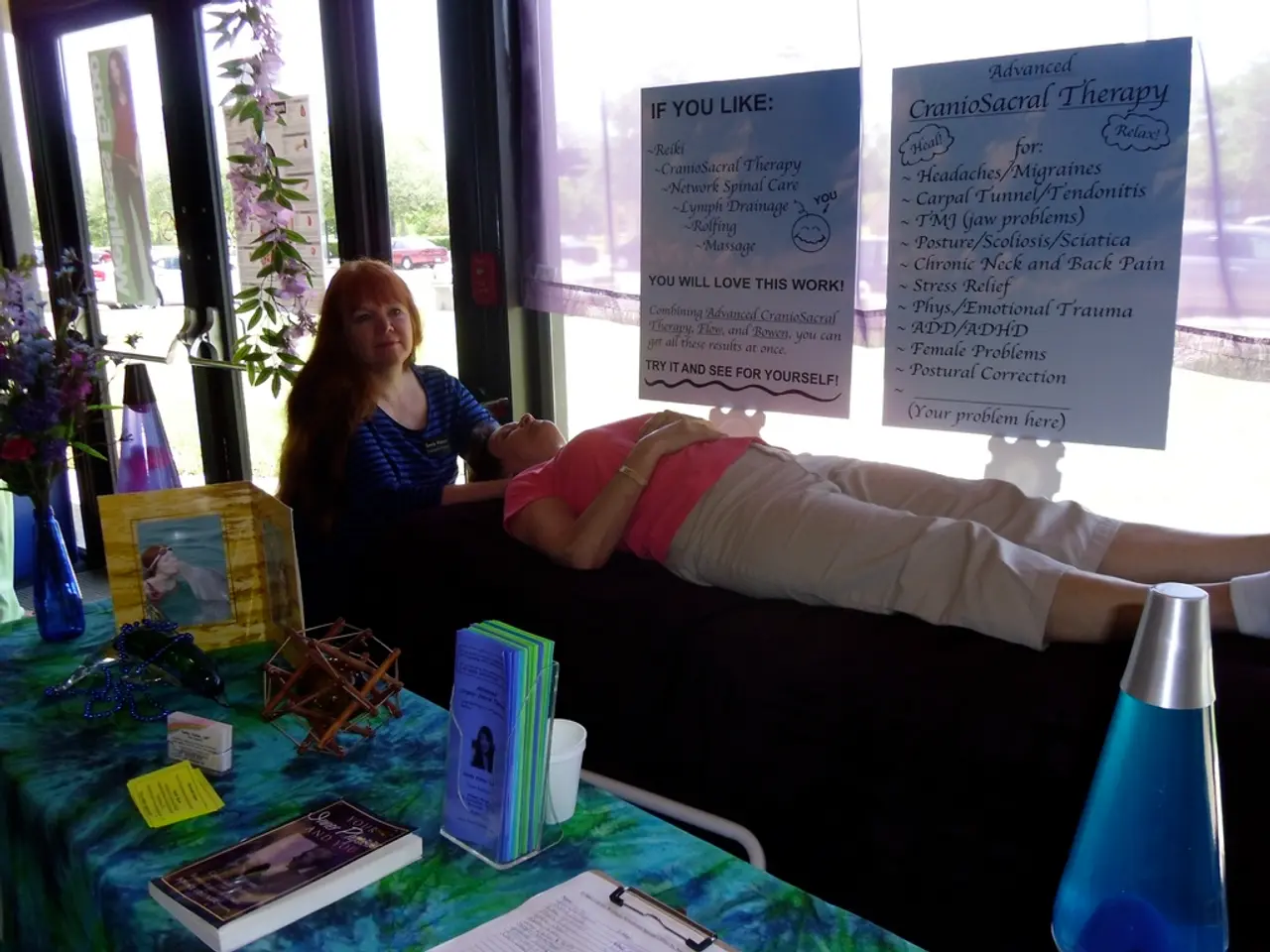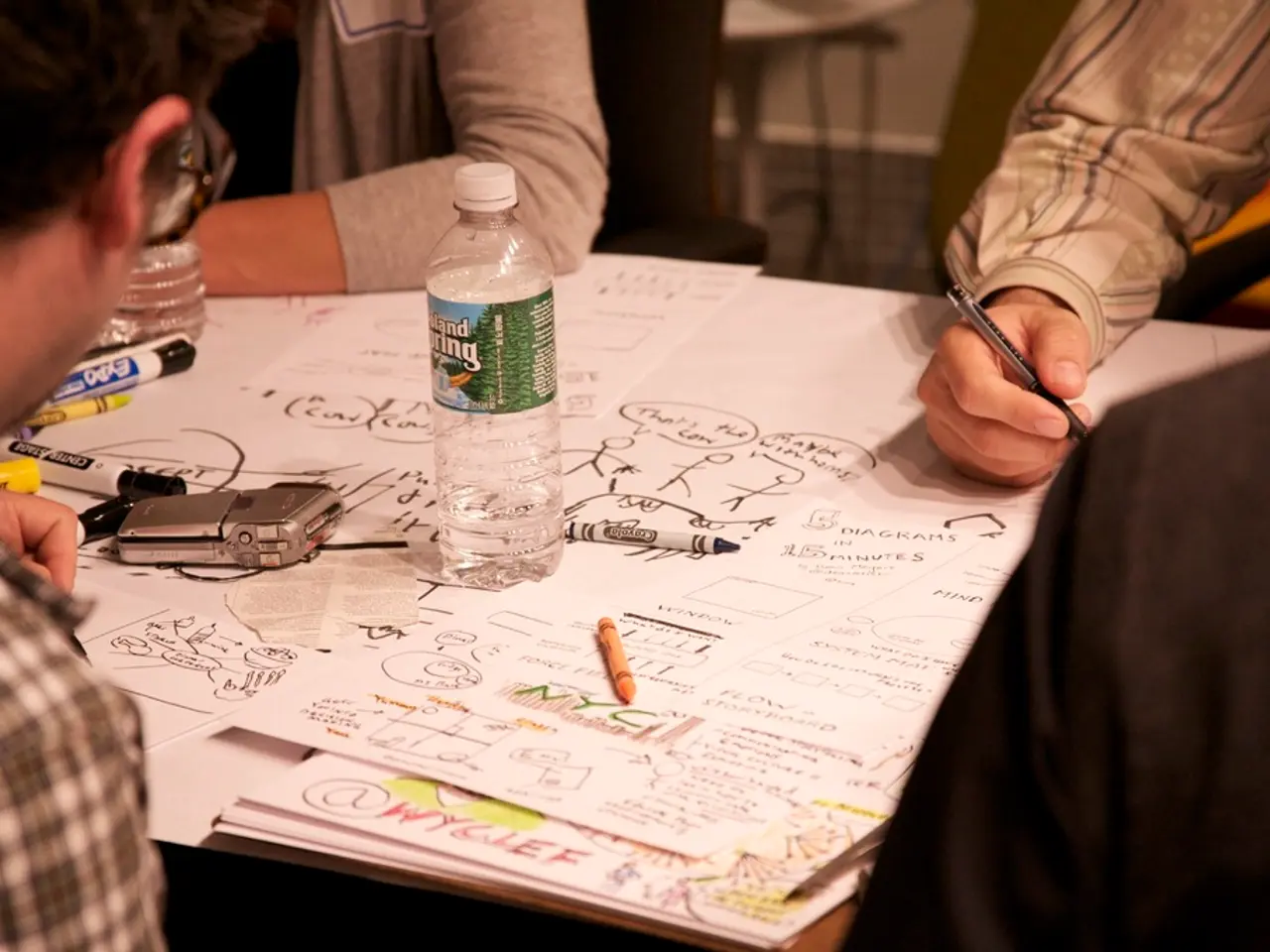Exploring Innovation: The Surge of Non-Conventional Artificial Limbs
In the realm of human evolution, the desire to augment and enhance the body with prosthetics dates back thousands of years, with ancient civilizations like Egypt and Rome showcasing examples of these advanced devices [1]. Today, the world of alternative prosthetics continues to push boundaries, challenging traditional notions of beauty and aesthetics while prioritizing individuality, self-expression, and functionality [2].
Embracing diversity and celebrating individuality in prosthetic design fosters a culture where these devices are seen as opportunities for self-expression, empowerment, and creative exploration. Artists like Viktoria Modesta have become powerful advocates for this movement, transforming prosthetics into fashion statements and challenging the stigma surrounding disability [3].
Advocating for medical device reform, expanding insurance coverage, and supporting organizations that provide financial assistance for prosthetic users are crucial steps towards a more equitable and just system [4]. Limited insurance coverage creates a system where financial resources often dictate access to essential healthcare technologies, creating a disparity in access that highlights the urgent need for policies that prioritize affordability and equitable access to prosthetics for all who need them [5].
The future of alternative prosthetics is expected to see more innovative and personalized designs due to advancing technology and the growing movement for inclusivity. Improving access to these life-changing devices requires medical device reform, expanded insurance coverage, and financial assistance programs [6]. Current state-of-the-art prosthetics include bionic limbs with implanted titanium rods for direct skeletal attachment, enabling better stability and sensory feedback, thus feeling more like a natural part of the body [1]. Additionally, low-cost, polymer-based prosthetic hands with finger replicas are being developed to increase accessibility [4].
Innovative bioinspired prosthetic feet using hybrid natural and synthetic fiber composites offer improved mechanical performance and comfort tailored for athletic activities, surpassing traditional designs in mimicking natural limb function [5]. These advancements reflect broader interdisciplinary advances in robotics, materials science, and neuroscience that drive prosthetics from rigid, externally attached devices to seamlessly integrated, adaptable, and functionally biomimetic systems [7].
Recent developments in elbow exoskeletons focus on lightweight, fully wearable systems combining soft actuators and improved sensors to increase usability in daily life and rehabilitation contexts without bulky external equipment [2]. These trends reflect a paradigm shift in prosthetic design, moving away from socket-based attachments and standard mechanical joints offering limited sensory feedback and comfort towards direct skeletal attachment with implanted rods and electrode interfaces [1].
By prioritizing affordability and accessibility, we can ensure that everyone who can benefit from prosthetics has the opportunity to do so. Certified prosthetic technician Nicholas Harrier is on a mission to make custom prosthetic covers accessible to all, donating his time and skills to create personalized covers free of charge [8].
Realizing the full potential of the field requires addressing systemic barriers that limit access and perpetuate inequality. The disability rights movement of the 20th century challenged perceptions of disability and advocated for greater inclusion and acceptance, paving the way for a more open and accepting environment for alternative prosthetics to emerge [9].
Examples of alternative prosthetic designs include third thumbs, running blades, artistic prosthetics, and custom covers. The future trajectory of alternative prosthetics is characterized by miniaturization, portability, and enhanced human–machine integration [7]. As technology advances and the movement for inclusivity gains momentum, the future of prosthetics calls for reform and empowerment, advocating for medical device reform and increased affordability, and embracing diversity and celebrating individuality [10].
References:
[1] McDermott, R. (2019). The future of prosthetics: Integrating technology with biology. Retrieved from https://www.ncbi.nlm.nih.gov/pmc/articles/PMC6766771/
[2] Ting, Y. Y., & Huang, Y. T. (2019). A review of recent advances in wearable upper limb exoskeletons. Retrieved from https://www.sciencedirect.com/science/article/pii/S2468053019300293
[3] Modesta, V. (2021). Viktoria Modesta: Prosthetics as fashion statements. Retrieved from https://www.bbc.com/culture/article/20210104-viktoria-modesta-prosthetics-as-fashion-statements
[4] Harrier, N. (2020). Making prosthetic covers accessible to all. Retrieved from https://www.prostheticsmag.com/news/making-prosthetic-covers-accessible-to-all
[5] Mowlavi, M., & Sadeghi, M. (2018). A review of the state-of-the-art in prosthetic foot design. Retrieved from https://www.sciencedirect.com/science/article/pii/S1568993X18300848
[6] The Future of Prosthetics (2021). Retrieved from https://www.thefutureofprosthetics.com/
[7] Kim, J., & Kim, J. (2020). A review of the current state and future trends in prosthetics. Retrieved from https://www.mdpi.com/2072-666X/12/18/4733
[8] Harrier, N. (2021). Interview with Nicholas Harrier. Retrieved from https://www.prostheticsmag.com/news/interview-nicholas-harrier-certified-prosthetic-technician
[9] The Disability Rights Movement (2021). Retrieved from https://www.history.com/topics/civil-rights-movement/disability-rights-movement
[10] The Future of Prosthetics (2021). Retrieved from https://www.thefutureofprosthetics.com/
- The future of prosthetics may involve miniaturization, portability, and enhanced human-machine integration, thanks to advancements in science and technology.
- Artificial intelligence, robotics, and neuroscience collaborations are driving the development of advanced prosthetics, striving to create seamlessly integrated, adaptable, and biomimetic systems.
- With personalized designs, the world of alternative prosthetics seeks to break societal norms, fostering a community where these devices become platforms for self-expression and creative exploration.
- Affordability and accessibility concerns must be addressed to ensure that medical-conditions requiring prosthetics receive equal treatment, aligning with the health-and-wellness goals of the community and the principles of the disability rights movement.




